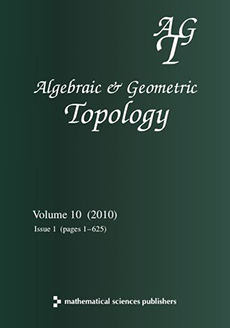Abstract
For a knot in , let be the characteristic toric sub-orbifold of the orbifold as defined by Bonahon–Siebenmann. If has unknotting number one, we show that an unknotting arc for can always be found which is disjoint from , unless either is an EM–knot (of Eudave-Muñoz) or contains an EM–tangle after cutting along . As a consequence, we describe exactly which large algebraic knots (ie, algebraic in the sense of Conway and containing an essential Conway sphere) have unknotting number one and give a practical procedure for deciding this (as well as determining an unknotting crossing). Among the knots up to 11 crossings in Conway’s table which are obviously large algebraic by virtue of their description in the Conway notation, we determine which have unknotting number one. Combined with the work of Ozsváth–Szabó, this determines the knots with 10 or fewer crossings that have unknotting number one. We show that an alternating, large algebraic knot with unknotting number one can always be unknotted in an alternating diagram.
As part of the above work, we determine the hyperbolic knots in a solid torus which admit a non-integral, toroidal Dehn surgery. Finally, we show that having unknotting number one is invariant under mutation.
Citation
Cameron McA Gordon. John Luecke. "Knots with unknotting number 1 and essential Conway spheres." Algebr. Geom. Topol. 6 (5) 2051 - 2116, 2006. https://doi.org/10.2140/agt.2006.6.2051
Information





